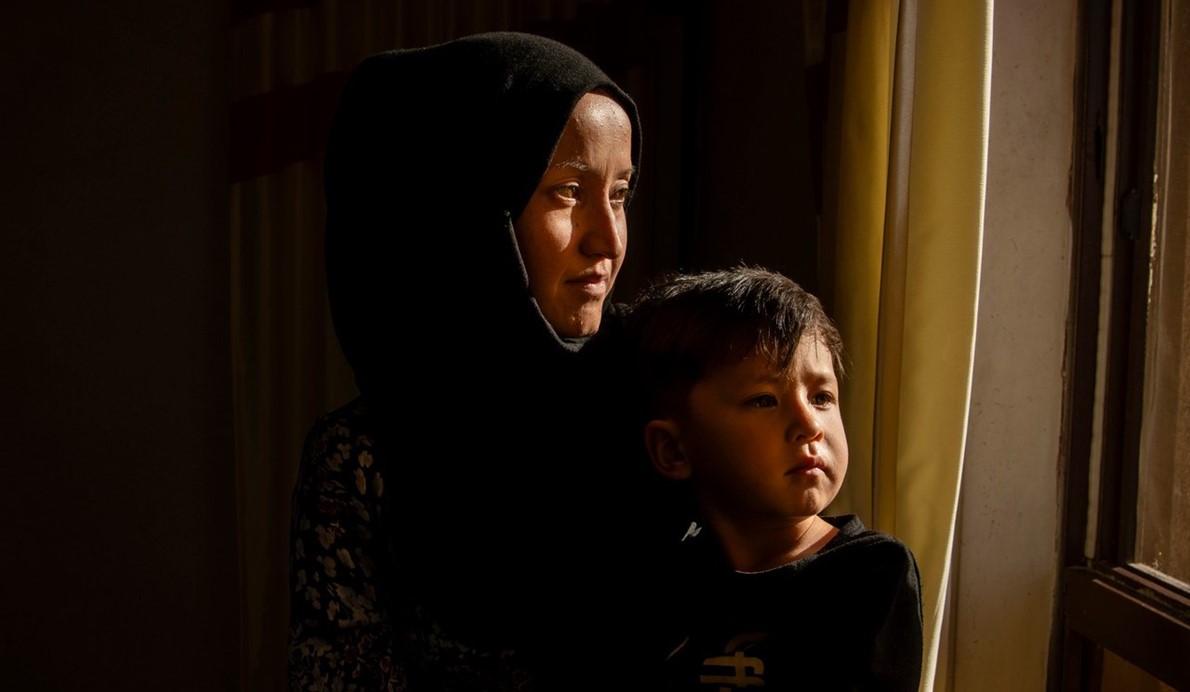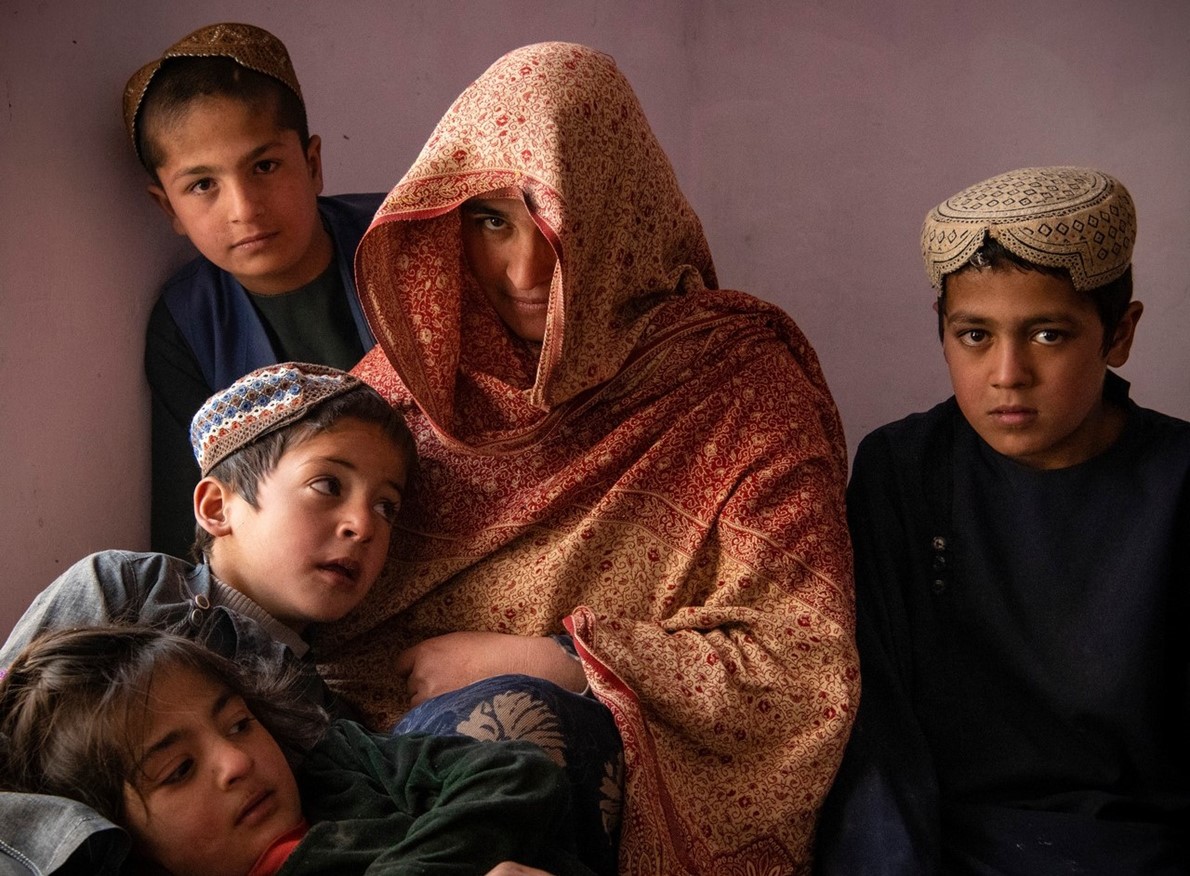Some women went into hiding, fearing retribution
after the Taliban seized power. Others began protesting on the street.
Grandmothers in dusty villages walked out of their mud brick homes with relief,
free for the first time in 40 years of the fear of stray bullets or airstrikes
raining down. Some teenage girls began attending schools in secret, echoing the
stories from their mothers’ childhoods that once felt like grim folklore.
اضافة اعلان
When the Taliban returned to power in Afghanistan in August
2021, women were among the most profoundly affected. While the end of fighting
offered a welcome respite, particularly for women in rural areas, others’ lives
have been severely constricted. Many watched 20 years of gains made under
Western occupation unravel as the new government issued edict after edict
scrubbing women from public life.
 Zulaikha, 25, who
went into hiding after the Taliban seized power, with her son in Kabul,
Afghanistan.
Zulaikha, 25, who
went into hiding after the Taliban seized power, with her son in Kabul,
Afghanistan.
Today, Afghanistan is among the most restrictive countries
in the world for women, according to human rights monitors. Girls are barred
from secondary schools. Women are prohibited from traveling any significant
distance without a male relative, and from going to public spaces like gyms and
parks. In recent months, women were banned from attending universities and from
working for aid organizations, some of the last hopes left for professional or
public lives.
Those policies have come to define the Taliban’s government
in the eyes of the West, and have caused tension within the movement’s
leadership. The changes threaten the aid offered by Western donors amid the
country’s dire humanitarian crisis. And they have been universally condemned,
including by other Islamic governments like Iran’s and Saudi Arabia’s, and set
Afghanistan on course for near-total isolation in the world.
The New York Times spoke with dozens of women across the
country to understand how their lives and Afghan society have changed over the
past year and a half. This is what they told us.
A wrenching changeKABUL, Afghanistan — Walk around the capital, Kabul, and it
often feels as if women have been airbrushed out of the city.
There are fewer women on the streets these days than even a
few months ago. More and more, those who still venture out — once in jeans and
long blouses — are covered head-to-toe in concealing robes, their faces
obscured behind masks. Female shop mannequins have been beheaded or their heads
wrapped in tinfoil.
Gone are the days when women could find expression, purpose or camaraderie at work or school, or even picnic in the park with friends or wander the zoo’s stone paths.
But the most profound change is invisible: It is the storm
of loss, grief and rage that has enveloped the city’s women, they say.
Masooda, a therapist in Kabul, encounters that tempest each
day as she goes house to house visiting her ever-growing list of clients. With
each new dictate restricting women’s rights, she gets more phone calls from
women desperate for any emotional outlet, any avenue for relief. Gone are the
days when women could find expression, purpose or camaraderie at work or school,
or even picnic in the park with friends or wander the zoo’s stone paths.
The return of the Taliban is most difficult for the younger
women, she said, whose dreams of becoming politicians, athletes, surgeons, or
CEOs once seemed achievable. They grew up in a world of possibility — and
watched it shatter when the Western-backed government collapsed.
“The young women are not coping well — they lost their
hopes. They cannot deal with the situation,” said Masooda, 52, who prefers to
go by her first name for fear of retribution.
Peace at lastTANGI VALLEY, Afghanistan — For most of the past 40 years,
Habiba could feel death knocking at her door.
When she was a child growing up in central Afghanistan, she
endured the bloody days of the Soviet invasion and then the years of fighting
and civil war that followed. After the Americans invaded in 2001, some of the
fiercest fighting played out in her village along the Tangi Valley, a lush
patchwork of fields flanked by hills in Wardak province.
Habiba often awoke to find new homes destroyed in overnight
bombings. Every day that she went to collect water or buy food, she knew she
might not make it back home, and no family seemed unscathed. But Habiba
endured.
 Aziza, 35, who lost
her husband — a Taliban fighter — during the war, in the Saydabad District of
Wardak, Afghanistan.
Aziza, 35, who lost
her husband — a Taliban fighter — during the war, in the Saydabad District of
Wardak, Afghanistan.
Then one morning four years ago, her 36-year-old son, Mohammad
Sami, was shot in the chest while he tended to their wheat fields. Villagers
believed he had been killed by a government police officer in retaliation for a
Taliban assault days earlier.
After that, Habiba lost herself in rage, she said. She hated
the Western-backed government. When she saw its soldiers driving through the
village, she prayed they would die. She vowed to help the Taliban in any way
she could — offering them food, water, a place to sleep.
Her vengeance came in August 2021, when the government
collapsed. As the village erupted in celebratory gunfire, Habiba beamed with
pride, she said, and in the year and a half since she has felt at ease for the
first time in her adult life.
“I have the fear 24 hours a day; the fear will not leave me alone even at night. When I wake up, I just pray to God, ‘Please, help Afghan people to at least live in peace’.”
She visits relatives she did not see for decades because of the
fighting. She does not worry about bombs falling from the sky. When her slain
son’s four young children leave the house to play, she knows they will return
home, unharmed.
“All my life was spent in war,” said Habiba, who is around
50 and who, like many people in rural Afghanistan, uses only one name. “Now we
can live freely — without fear or danger.”
Studying in secretKANDAHAR, Afghanistan — The girls sidle down the cobblestone
path to the building with the worn wooden door. Entering, they cross a
courtyard shaded by a canopy of vines, descend down a flight of stairs, and
walk through a narrow underground passageway to their classroom.
There are no windows, no chairs, no desks. The only
decorations on the concrete walls are a dry-erase board, a fluorescent light,
and a poster depicting proper hand-washing technique.
But to the dozens of high school girls who come here each
morning, the classroom is an oasis — and their presence an act of defiance.
When the Taliban seized power, girls’ schools remained open
in a kind of limbo — neither officially sanctioned nor forbidden — for months.
Then hours before classes were set to resume for the spring semester in March
2022, the government announced that girls were banned from attending high
schools indefinitely.
It was a dark day for teenage girls across the country. They
describe passing the months that followed in a fog of deep depression. But as
the anger and grief subsided, many were determined to find a way back to the
classroom.
In one neighborhood in Kandahar, a southern city in the
Taliban heartland, former high school students and teachers banded together to
create an underground classroom for girls to continue their studies. The
teachers post a lookout at the front gate each morning and call the students’
parents to ensure they arrive home safely each afternoon. If they are ever
questioned about what happens in the building, the schoolgirls have been
coached to answer that they are attending Quranic classes, which are still
permitted for girls.
It is often a terrifying endeavor. But the students and
teachers alike are clinging to it as one of the few remaining sources of hope.
“Regimes come and go all the time in Afghanistan,” said
Zubaida Azizi, 20, a teacher. “We should study and be ready for the next one.”
An unyielding fearBAMIYAN, Afghanistan — The fear lives within her, Keshwar
Nabizada said.
It was born when the Taliban first seized power a generation
ago and wreaked havoc on her village in Bamiyan province, a center of
Afghanistan’s Hazara ethnic minority. The fighters burned her house to the
ground and killed her 17-year-old son, she said. Her brother was arrested and
disappeared for months. When he was finally found, dead, she could only recognize
him by the wool jacket she had stitched together for him by hand.
But to the dozens of high school girls who come here each morning, the classroom is an oasis — and their presence an act of defiance.
After that regime was toppled, she went back to planting
potatoes on her small farm and enjoyed the calm the US invasion brought. “It
was like we were not in prison anymore,” said Nabizada, 60. Still, the terror
never truly went away. She recounted stories of those bloody days to her
surviving children, telling them the Taliban were never to be trusted, always
to be feared.
When the Taliban returned to power in 2021, the panic roared
back. Nabizada and her family fled the area for months, terrified of another
massacre. A year and a half later, she said she now believes the Taliban’s new
rule is not as brutal as its first.
“To be honest, this regime in power now is better. They are
not going around and killing people like before,” she said.
Still, she said, she cannot shake the dread.
“I have the fear 24 hours a day; the fear will not leave me
alone even at night. When I wake up, I just pray to God, ‘Please, help Afghan
people to at least live in peace,’” she said.



